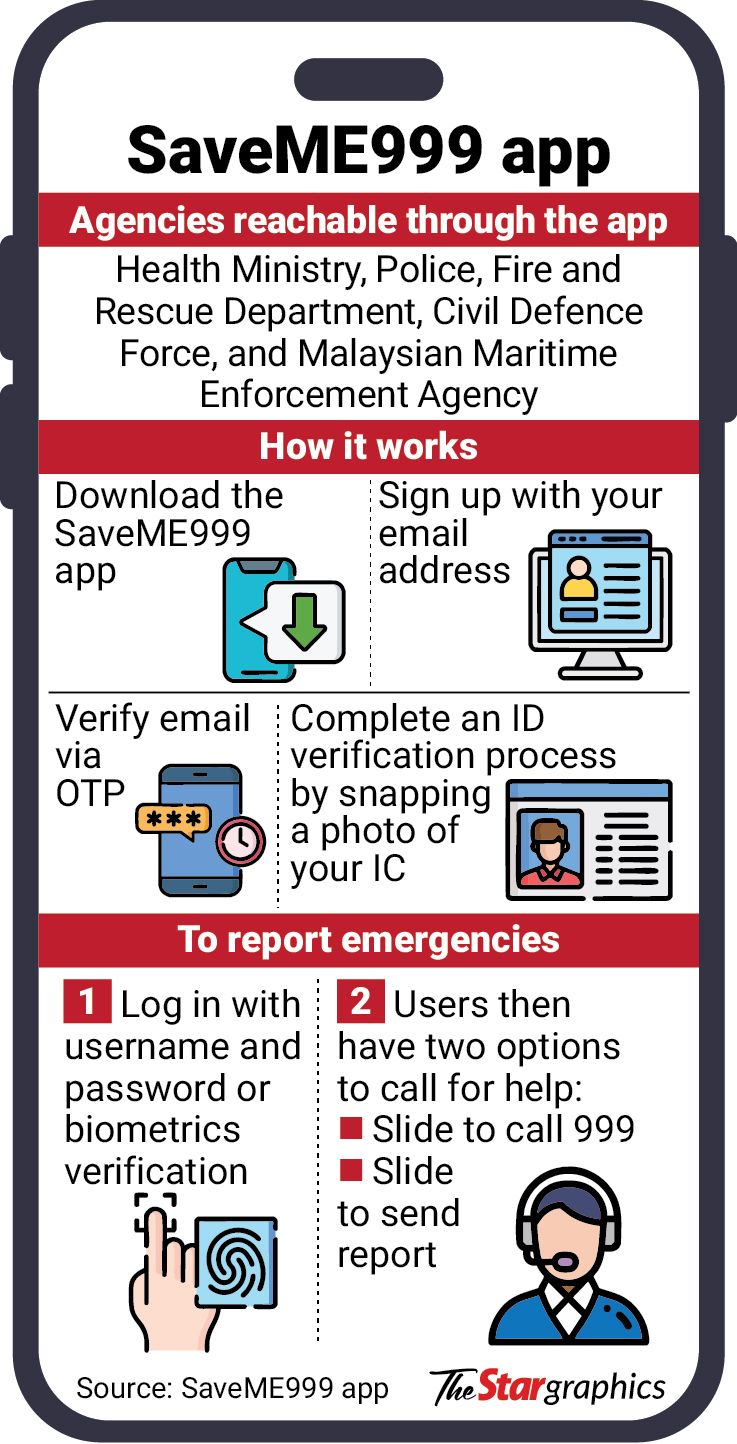Panic hits public as new emergency system is stricken
PETALING JAYA: It was a matter of life and death for some, but help was not forthcoming – Malaysia’s newly-launched emergency system is having teething problems.
This included delays in dispatching ambulances for emergencies and ambulances not showing up, leaving victims and patients with medical emergencies in dire straits.
A first responder said the Next Generation Malaysian Emergency Response Services
ALSO READ: Emergency services running well, say ministries
He said it detects cases which were at a distance and outside of the stipulated radius, making it difficult to quickly attend to patients who are in serious condition.
“The system was constantly down and showed error messages when alerts were sent to the hospital.
“Sometimes it would hang and we had to refresh it several times for the alert to go through,” said the first responder on condition of anonymity.
“We should just stick to the former Malaysian Emergency Response 999 (MERS999) system.
“This system should have been properly tested first. There was a reason why we had borders when it comes to responding. This was to ensure quick response to emergencies. However, this borderless technology is not helping. In fact, it is hampering efforts to render quick aid,” he added.
The Star learnt that in one fatal case, there was no response on the app even after 15 minutes.
In another, where an accident occurred at around 8.30am, an ambulance only arrived after 10am.
In another case, an accident victim had to be taken to hospital in the vehicle of a passerby as the ambulance did not arrive on time, the victim’s brother claimed.
In one case in Telok Air Tawar, Butterworth, two ambulances were sent to the same spot and 999 could not identify which was the actual ambulance sent, said Senator Dr RA Lingeshwaran, adding that he had received many complaints that the system was not functioning properly.
“This failure has a direct impact on the safety and lives of the people,” he said in a statement.
A survey on social media also showed claims of some users lamenting their experiences including long waits for ambulances in emergencies.
“This situation is no longer a minor technical issue; it has the potential to become a national disaster that could cost lives. The failure of such a critical system, which serves as the nation’s lifeline, is completely unacceptable,” Lingeshwaran said.
He urged the government to immediately implement urgent rectification measures and explain the cause of the failure and the steps being taken to prevent a recurrence.
“Conduct a thorough audit of the entire NG999 infrastructure and operations,” he said. “I also call upon members of the public who have used the NG999 System since its launch on Saturday to share your experiences with me. Your feedback is crucial for us to push for more accountable improvements.”
Lingeshwaran said he had also been contacted by several NGO ambulance services informing him that they are now receiving non-stop emergency calls directly from the public.
The NG999 went live on Nov 16.
The Communications and Health ministries as well as Telekom Malaysia Bhd said in a joint statement that the Health Ministry has also continued to strengthen efforts to enhance field response.
“On behalf of the Ministry of Health (MOH), efforts to strengthen on-ground response continue to be enhanced through the addition of ambulances, the reorganisation of personnel deployment in strategic areas, as well as the involvement of volunteer bodies and local non-governmental organisations (NGOs) as part of the nation’s emergency response capacity. Continuous assessments of coordination capability and asset readiness are also being carried out together with the relevant agencies,” they said in a joint statement.
In July last year, Telekom Malaysia Bhd’s wholly-owned subsidiary, TM Technology Services Sdn Bhd (TM Tech) entered into a RM1.25bil concession agreement with the government, to develop the system.
NG999 is an integrated strategic digital system that was supposed to enhance resource and data sharing between emergency call centres and related central agencies, thus improving the efficiency of emergency services.


